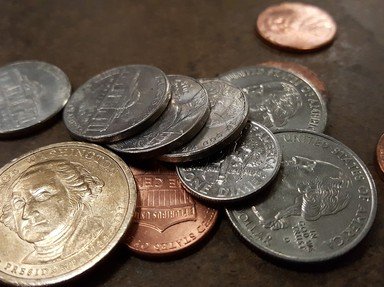Quiz Answer Key and Fun Facts
1. The United States Treasury Seal has been printed using green ink on all United States paper money in the years between 1969 through 2006. Before 1969, the Department of the Treasury has printed the Seal in a variety of colors, shapes, and sizes. Which of these colors was NOT used to print the United States Treasury Seal?
2. United States paper money was first printed in 1861. These notes came to be known as Demand Notes. Notes printed before this time were issued privately through individual banks and had very limited spending power. There is one characteristic that makes Demand notes a unique series from all other United States notes that came after from 1862 to 2006, what is it?
3. In coin collecting the front of the coin is known as the obverse and the back of the coin the reverse. In paper money the front is called the face and the back is simply the back. In 1934 a special overprint of Hawaii was printed across the back of certain $5, $10, and $20 Federal Reserve notes. Besides the Hawaii overprint on these notes, what else made them unique from other 1934 Federal Reserve notes?
4. U.S Paper currency is known by many fanciful names that refer to a single type note or a particular series of notes. $10 Silver Certificates from the years 1886, 1891, and 1908 are commonly called by what other well known name?
5. The 1918 $50 Federal Reserve Bank note is one of the more highly prized collectables in the hobby. What is unique about this series of Federal Reserve Bank notes?
6. The 1896 $1 Silver Certificate is considered by many collectors as one of the most beautiful notes ever produced. The face of this note was designed from a painting that hangs in the Bureau of Engraving and Printing. What is the title of the famous engraving used for this note?
7. In 1934 certain $5, $10, and $20 Federal Reserve notes had a special Hawaii overprint. However the $1 Hawaii note from this series is different in two major ways. What two ways is the $1 Hawaii note different from the $5, $10, and $20 Hawaii notes?
8. United States legal tender $10 notes from the 1875, 1878, and 1880 series are commonly referred to by another name. This name originated based on the bearers perspective when viewing the note. What is this notes colorful nickname?
9. This historical figure has appeared on the most denominations and types of United States paper money. Denominations include $1 $2 $5 $10 $20 $50 $100 $500 $1,000 $5,000 $10,000 types being Federal Reserve notes, Federal Reserve Bank notes, silver certificates, gold certificates, United States notes, Treasury notes, National Currency notes, and National Bank notes.
10. Over the years many of our United States historical figures appear on different denominations of currency. Can you spot the note that does NOT match up with the correct historical figure, type, denomination and series date?
Source: Author
Malix
This quiz was reviewed by FunTrivia editor
ozzz2002 before going online.
Any errors found in FunTrivia content are routinely corrected through our feedback system.
